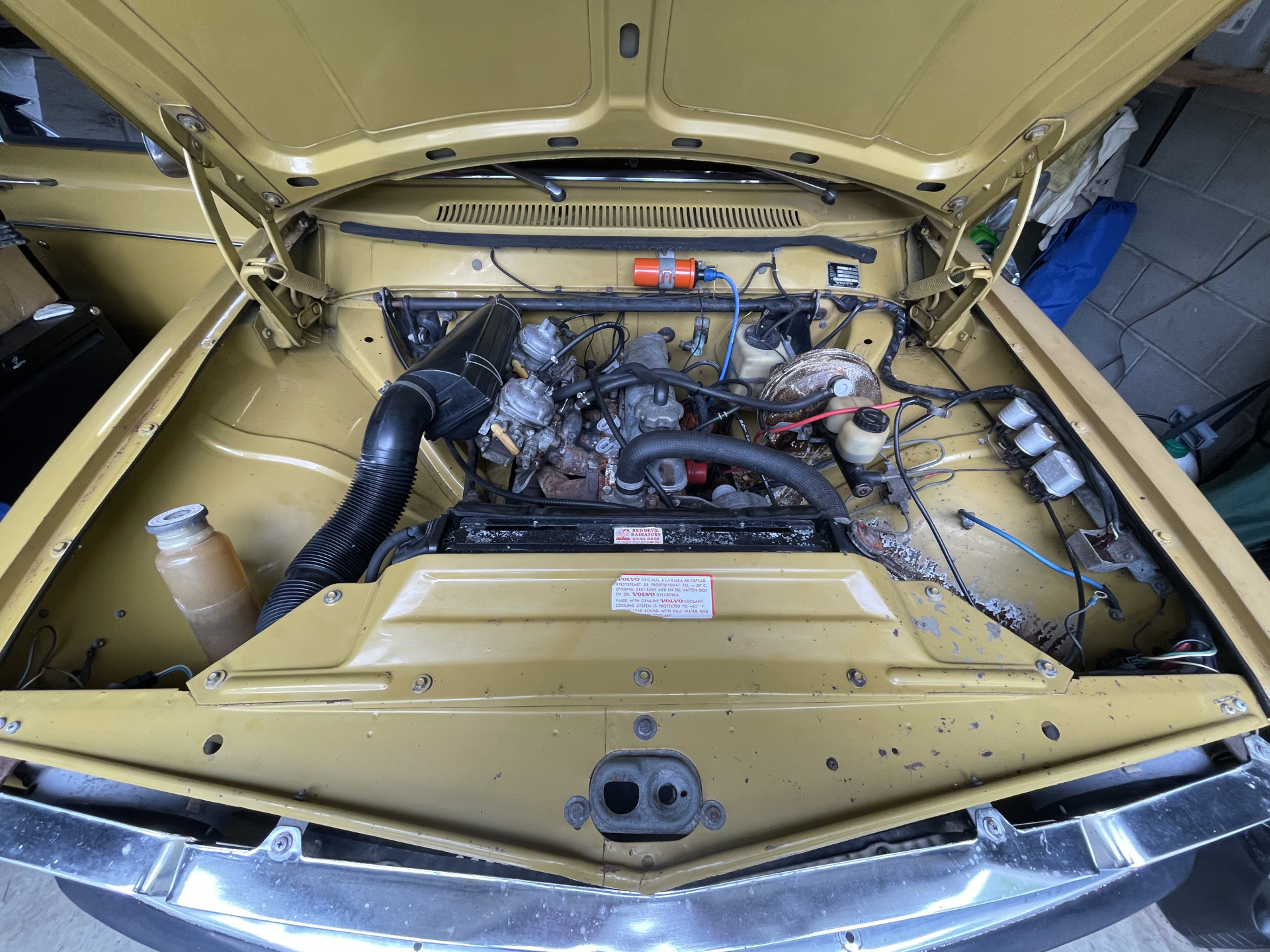- Edited
My 145 has a replacement B20 engine with the injector holes blanked and a set of twin Strombergs. Interesting to read what model my now carbed, injected B20 may have come from.

My 145 has a replacement B20 engine with the injector holes blanked and a set of twin Strombergs. Interesting to read what model my now carbed, injected B20 may have come from.

^ Yes.
1800E and 1800ES (often called P1800E and P1800ES incorrectly)
Back then, when the 140s roamed the highways, few shops understood fuel injection (and today, few shops understand carbs....) so FI was often thrown out and replaced.
You can tell if the car originally with injection from the chassis ID code. This code will be something like 1453349Ynnnnnn (which JFTR, is a 1973 145, B20B engine, M40 manual box, no sunroof, RHD assembled in Australia, and nnnnnn is the body number). This number is found on the lower front door frame on the RH side, stamped just below the upper RH door hinge not far from the door light switch.
Thanks for your comment, @Major Ledfoot.
In my opinion, the 1974 Volvo 145 manual with fuel injection was one of the best motor vehicles ever produced.
Of course the power to weight ratio of the vehicle is very important, as you imply.
Toyota was producing fuel injected 2 litre engines in the middle of the 1980s that only produced 77 kW, yet Volvo was producing fuel injected 2 litre B20E and B20F engines more than ten years earlier that produced more power than this.
I nearly had a heart attack when I learnt for the first time a few years ago from Wikipedia that Volvo 144s and 145s had fuel injected engines, as well as carburettor engines. My mother had a 1974 Volvo 144 automatic with a carburettor engine. While the handling of the vehicle was good, the automatic transmission and the lack of power that you cited meant that it was effectively unviable as a motor vehicle.
I can only imagine what a manual 145 with injection would be like to drive. It must be like a rally car. They really did seem to be indestructible.
(The reason I prefer the 145 to the 144 is obviously for the cargo space in the rear.)
Once a decently sized sway bar is put on the front, a not-too-wild rear sway is added, the spring rates are revised, and the factory suspension angles are ignored and revised to more sensible figures, 140s handle exceptionally well.
My 145 is a project which really has yet to begin.... She's had a respray at some point in the past, and like every 140 I've had that's had one before entering my custody (except 1), many rust repairs are needed. Still starts and runs, but far from ready for rego.
CouplerTec in Australia makes good electronic corrosion protection systems.
I tried the one-pad system from early 2006 to early 2011 soon after it was first released. It does stop corrosion, however parts of the motor vehicle further away from the pad will still corrode, such as the rear of the motor vehicle if the pad is affixed to the firewall of the engine bay.
(When I purchased the system in early 2006, I told the sales representative that I thought I needed the two-pad system. In typical Australian style, he told me that would be overkill and that I only needed the one-pad system, which was incorrect advice.)
In order to be stop all corrosion on a motor vehicle with certainty, it is best to get the four-pad system or possibly the two-pad system.
https://couplertec.com.au/product/ct4/My ‘71 145 was definitely originally twin carb. It has a B20e with the carbs attached. I have the original B20b which I will get around to rebuilding. I’m guessing the twin Strombergs and the throttle assembly and manifolds are off the original engine. I haven’t had it started yet to see if it runs, as fuel went off over the 6-10 years stored and all fuel parts are being stripped and cleaned.
https://en.wikipedia.org/wiki/Volvo_B18_engine#B20
The weakest link on the FI engines are vacuum leaks and the hand grenade diaphragm. Simple, but ok.
My brother had a144gl 1974 yellow 4 sp m40. Black leather seats. Assembled in Australia
my 1975 245 also m40 was a far better drive and I kept it for 10 years
both cars needed a fuel distributor flush after 200000km not too daunting a procedure but made a big difference to starting and performance
Read Ledfoots messages he is the expert-and study the picture at the start. Im pretty sure The 74 144 and 145 were all GL model (white enamel on the shield) and the fuel (black) tubing inside looks like a dogs breakfast. That was what my brothers 144gl and at least 3 others I knew were like.
Only real problem we had was a clogged fuel distributor. Lifted it off changed the o ring in the piston flushed all the lines new fuel filter recharged with petrol and started first turn!
Thank you for the detail history on the FI engine and for the correct 1800ES name. Cheers Bob